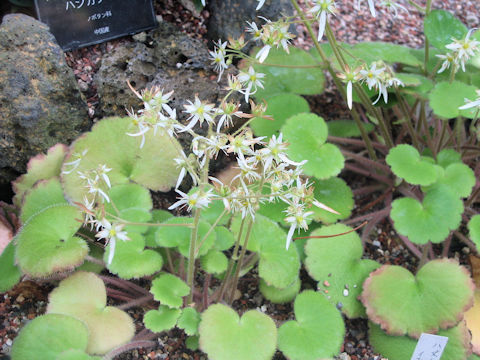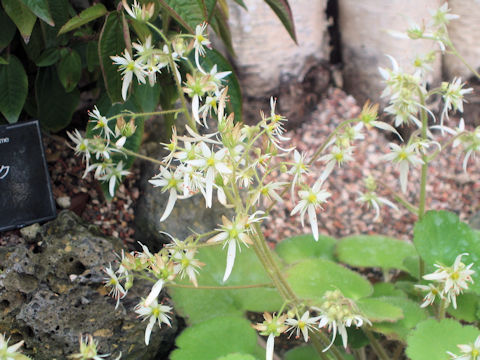 |




|

|
わが国の固有種で、本州の房総半島南部と伊豆諸島に分布しています。「だいもんじそう(大文字草)」の変種で、半日陰の湿った崖などに生えます。葉は腎円形で厚く、茎や葉は細い毛で被われています。10月から1月ごろ、花茎を伸ばして白い花を咲かせます。
|

|
ユキノシタ科ユキノシタ属の多年草で、学名は Saxifraga fortunei var. crassifolia。英名はありません。
|

|
"Izunoshima-daimonji-so" (Saxifraga fortunei var. crassifolia) belongs to Saxifragaceae (the Saxifrage family). It is a perennial herb that is endemic to Japan and is distributed in the southern part of the Boso Peninsula of Honshu and the Izu Islands. It is a variant of "Daimonji-so" and grows on damp cliffs in semi-shady areas. It has thick, kidney-shaped leaves, and its stems and leaves are covered with fine hairs. From October to January, the flower stalks grow and white flowers bloom.
|

|
大阪市鶴見区「咲くやこの花館」にて、2004年12月11日撮影。
|



